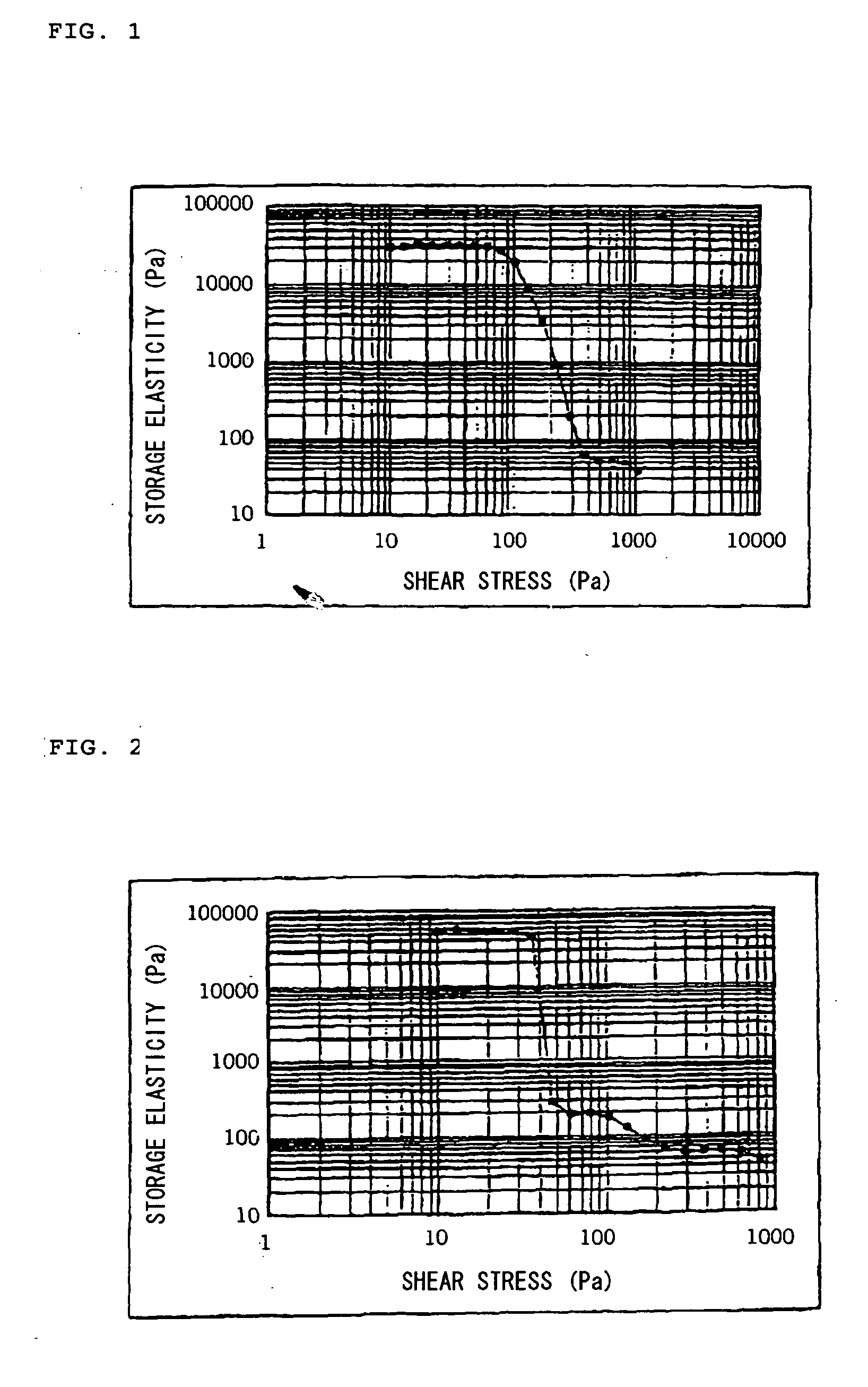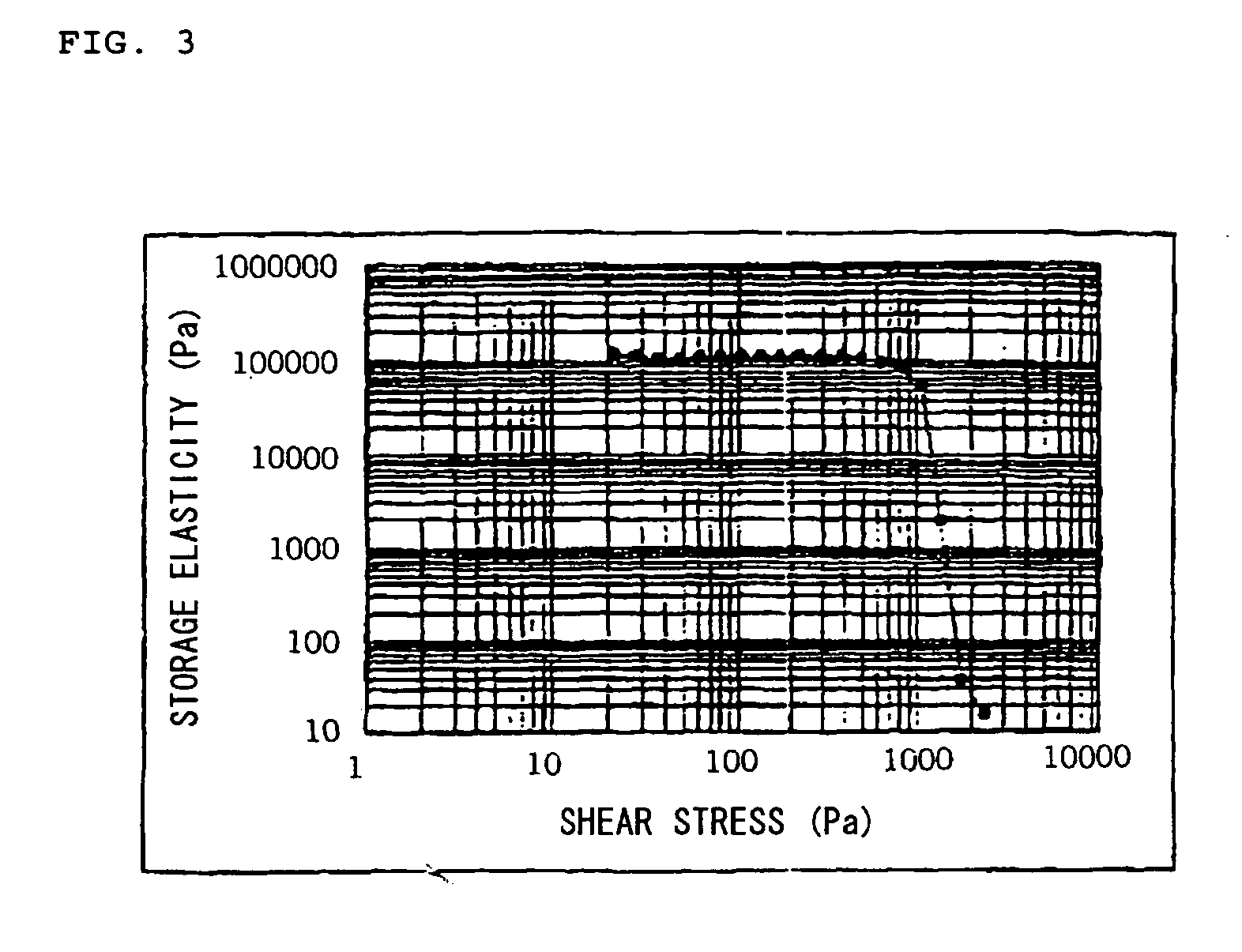Skin cosmetic
- Summary
- Abstract
- Description
- Claims
- Application Information
AI Technical Summary
Benefits of technology
Problems solved by technology
Method used
Image
Examples
manufacturing example 1
[0044] Sodium silicate No. 3 (Sodium Silicate of JIS K 1408-66 No. 3) (50 g) containing 29.0% by mass of SiO2 and 4.0 g of sodium chloride were dissolved in 91.0 g of deionized water to prepare an aqueous solution of sodium silicate containing 2.76% by mass of sodium chloride where SiO2 concentration was 10.0% by mass. After that, the above-prepared aqueous solution of sodium silicate was added to 240 cm3 of HCFC-123, in which 0.84 g of sorbitan monooleate was dissolved (surfactant concentration: 3,500 ppm) with stirring at 5,000 rpm using a stirrer (Auto Homo-Mixer manufactured by Tokushu Kika Kogyo) and the mixture was stirred for 5 minutes. Then carbon dioxide gas was blown thereinto at a flow rate of 200 cm3 / minute for 15 minutes under the temperature condition of 10° C. to conduct gelling. The resulting gel was separated from HCFC-123, adjusted to pH 2.0 by addition of sulfuric acid of 20.0% by mass concentration, aged at 80° C. for 1 hour and further subjected to a solid-liqui...
manufacturing example 2
[0047] Sodium silicate No. 3 (50 g) containing 24.0% by mass of SiO2 was dissolved in 10.0 g of deionized water to prepare an aqueous solution where SiO2 concentration was 20.0% by mass. After that, the above-prepared aqueous solution of sodium silicate was added to 240 cm3 of HCFC-123, in which 0.84 g of sorbitan monooleate was dissolved (surfactant concentration: 3,500 ppm) with stirring at 5,000 rpm using a stirrer (Auto Homo-Mixer manufactured by Tokushu Kika Kogyo) and the mixture was stirred for 5 minutes. Then carbon dioxide gas was blown thereinto at a flow rate of 200 cm3 / minute for 15 minutes under the temperature condition of 10° C. to conduct gelling. The resulting gel was separated from HCFC-123, adjusted to pH 2.0 by addition of sulfuric acid of 20.0% by mass concentration, aged at 80° C. for 1 hour and further subjected to a solid-liquid separation using a vacuum filter and the cake was washed with 1,500 cm3 of water and dried at 300° C. using an air-flow dryer to giv...
manufacturing example 3
[0050] Sodium silicate No. 3 (50.0 g) containing 29.0% by mass of SiO2 and 4.0 g of sodium chloride were dissolved in 91.0 g of deionized water to prepare an aqueous solution of sodium silicate containing 2.76% by mass of sodium chloride where SiO2 concentration was 10.0% by mass. After that, the above-prepared aqueous solution of sodium silicate was added to 240 cm3 of HCFC-123, in which 0.84 g of sorbitan monooleate was dissolved (surfactant concentration: 3,500 ppm) with stirring at 8,000 rpm using a stirrer (Auto Homo-Mixer manufactured by Tokushu Kika Kogyo) and the mixture was stirred for 5 minutes. Then carbon dioxide gas was blown thereinto at a flow rate of 200 cm3 / minute for 15 minutes under the temperature condition of 10° C. to conduct gelling. The resulting gel was separated from HCFC-123, adjusted to pH 2.0 by addition of sulfuric acid of 20.0% by mass concentration, aged at 80° C. for 1 hour and further subjected to a solid-liquid separation using a vacuum filter and ...
PUM
| Property | Measurement | Unit |
|---|---|---|
| Length | aaaaa | aaaaa |
| Length | aaaaa | aaaaa |
| Length | aaaaa | aaaaa |
Abstract
Description
Claims
Application Information
 Login to View More
Login to View More - R&D
- Intellectual Property
- Life Sciences
- Materials
- Tech Scout
- Unparalleled Data Quality
- Higher Quality Content
- 60% Fewer Hallucinations
Browse by: Latest US Patents, China's latest patents, Technical Efficacy Thesaurus, Application Domain, Technology Topic, Popular Technical Reports.
© 2025 PatSnap. All rights reserved.Legal|Privacy policy|Modern Slavery Act Transparency Statement|Sitemap|About US| Contact US: help@patsnap.com


